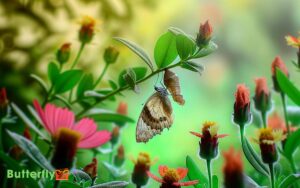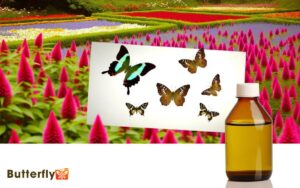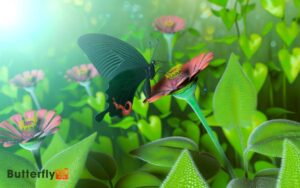Do Butterflies Die So Fast?
Butterflies die quickly due to rapid metabolic rates that expedite aging, compounded by the energy-intensive process of metamorphosis which prioritizes reproduction over longevity. Predation by birds, spiders, and other predators greatly reduces their lifespan, with up to 50% falling prey shortly after emerging as adults.
Environmental stressors like habitat loss, climate change, and pollution further accelerate mortality. The adult stage focuses on mating and oviposition, limiting life to a few weeks.
Understanding these factors illuminates why conservation efforts are essential in preserving butterfly populations. For a deeper grasp of their fascinating yet brief lives, further exploration is recommended.
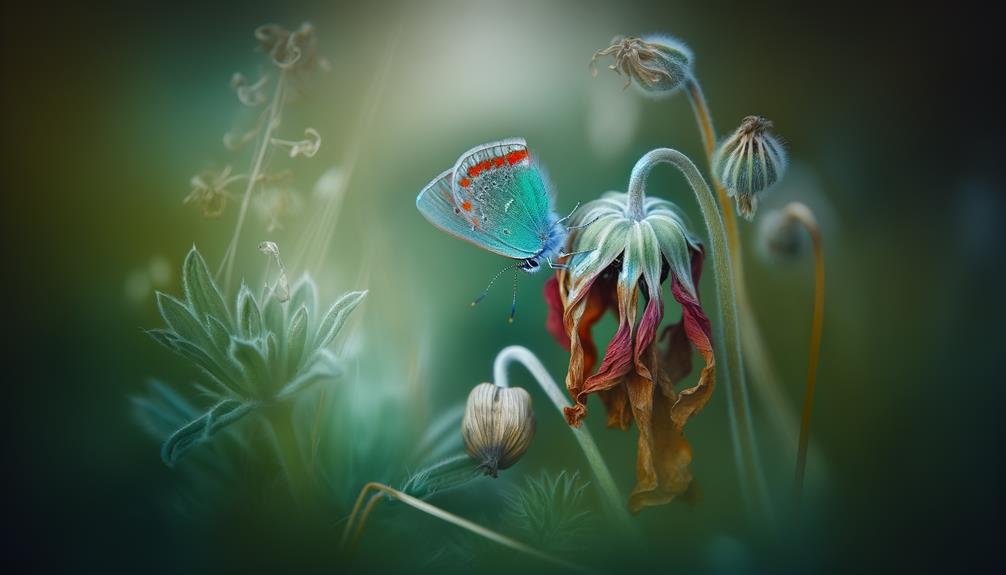
Key Takeaways
- Rapid metabolic rates accelerate aging and shorten their lifespan.
- Predation by birds, spiders, and mammals significantly reduces butterfly numbers.
- Metamorphosis consumes significant energy, leaving limited reserves for adult survival.
- Environmental stressors like habitat loss and climate change impact butterfly longevity.
Short Lifespan Explained
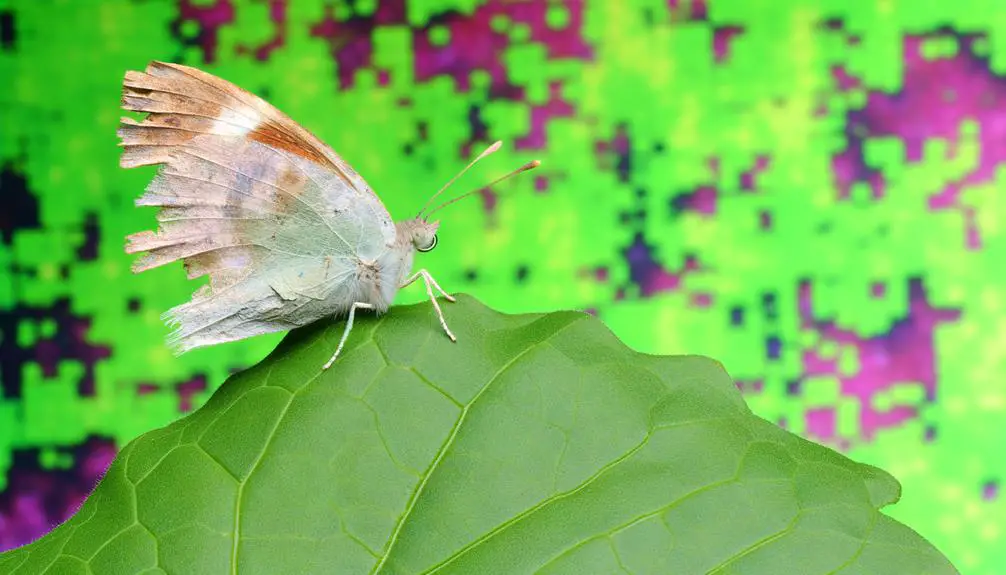
The short lifespan of butterflies can be attributed to their rapid metabolic rates and the specific biological functions tied to their life cycle stages.
Metabolism in butterflies is significantly accelerated, facilitating quick energy conversion but also leading to faster cellular aging and oxidative stress.
Additionally, butterflies undergo complete metamorphosis, comprising egg, larva, pupa, and adult stages. Each stage is temporally constrained, particularly the adult phase, which focuses on reproduction rather than longevity.
Research indicates that many butterfly species live only a few weeks as adults, dedicating their limited time to mating and oviposition.
This accelerated life cycle guarantees rapid population turnover but concurrently limits individual lifespan, emphasizing reproductive success over individual survival in evolutionary terms.
Role of Predation
In addition to the inherent biological factors, external pressures such as predation greatly contribute to the abbreviated lifespan of butterflies.
Predators including birds, spiders, and small mammals pose significant threats to butterflies. Research indicates that visually striking patterns on butterfly wings, often considered defense mechanisms, may not always suffice in deterring predators.
Studies have documented predation rates, revealing that up to 50% of adult butterflies fall victim to predators within a few days of emergence. Additionally, certain species of ants and wasps target butterfly eggs and larvae, reducing the probability of reaching maturity.
Hence, predation serves as a critical factor influencing butterfly mortality, further elucidating the reasons behind their comparatively short lifespans in natural ecosystems.
Environmental Stressors
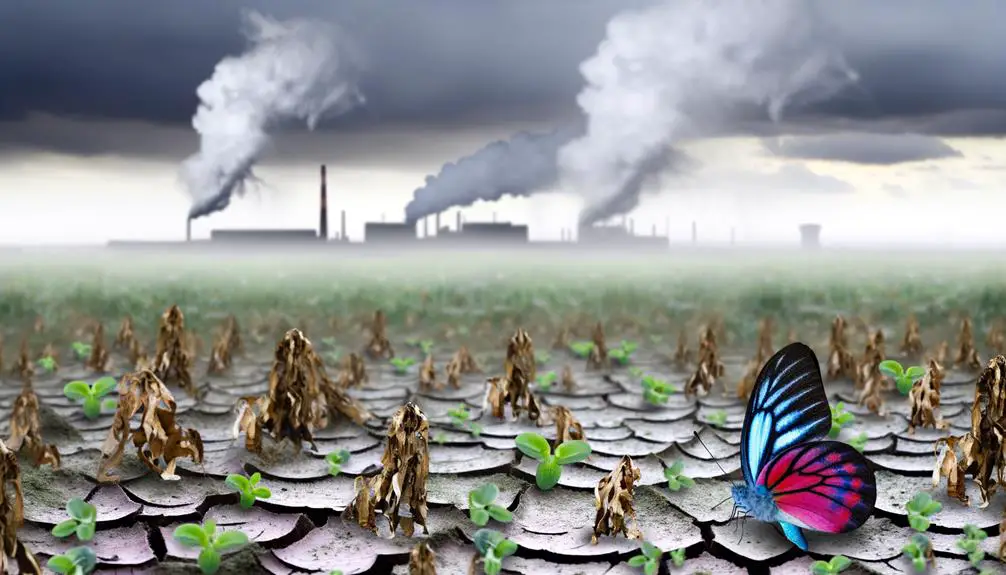
Subject to various environmental stressors, butterflies face additional challenges that additionally curtail their already limited lifespans. Key stressors include habitat loss, climate change, and pollution.
Deforestation and urbanization lead to the destruction of vital habitats, depriving butterflies of essential resources like nectar and breeding sites. Climate change exacerbates this issue by altering temperature and precipitation patterns, disrupting migratory and reproductive cycles.
Moreover, pollution, particularly from pesticides and heavy metals, directly impacts butterfly health, causing physiological stress and increased mortality rates. These environmental perturbations synergistically reduce butterfly populations, leading to genetic bottlenecks and diminished resilience. Furthermore, oe effects on butterflies, caused by the microsporidian parasite Ophryocystis elektroscirrha, weaken their immune systems, making them more susceptible to environmental toxins. Combined with habitat loss and climate change, these stressors further compromise their survival and reproduction. As a result, butterfly populations face dwindling numbers and a reduced capacity to adapt to shifting ecological conditions.
Empirical studies underscore the pressing need for conservation efforts to mitigate these stressors and preserve butterfly biodiversity.
Impact of Metamorphosis
Beyond the environmental stressors, the physiological demands of metamorphosis also greatly contribute to the shortened lifespans of butterflies.
During metamorphosis, butterflies undergo a complex transformation, shifting from larval to adult stages. This process requires significant energy expenditure and biochemical changes, including the breakdown and reformation of tissues.
Research indicates that the oxidative stress generated during these stages can lead to cellular damage, reducing the overall robustness of the adult butterfly.
Furthermore, the adult stages of many butterfly species are primarily focused on reproduction rather than longevity. With limited energy reserves and a high metabolic rate, adult butterflies often have a narrow window to mate and lay eggs before succumbing to natural senescence and environmental pressures.
Conservation Efforts
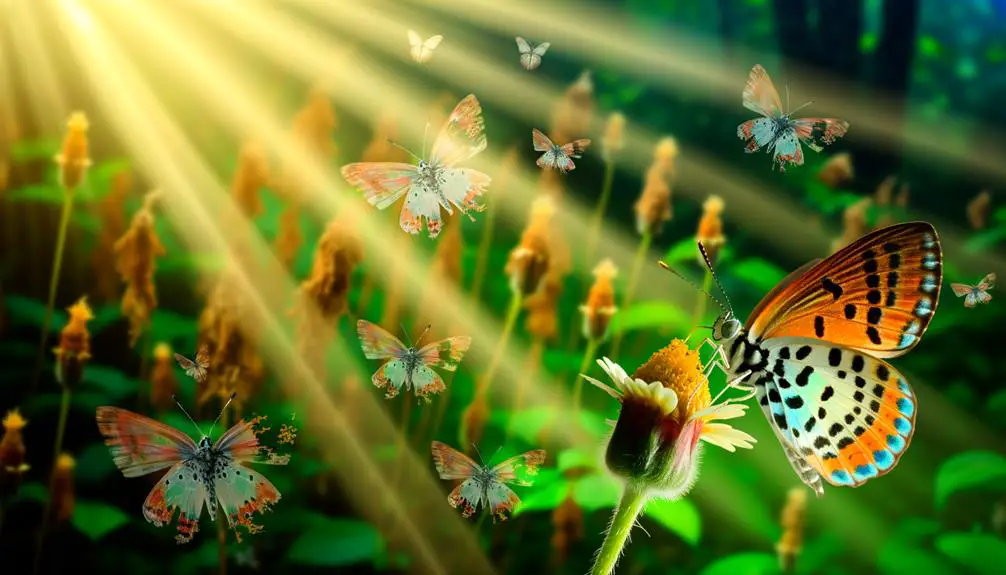
Effective conservation efforts are essential in mitigating the rapid decline of butterfly populations, which are increasingly threatened by habitat destruction, climate change, and pesticide use.
Habitat restoration, including the planting of native flora, is critical for providing essential nectar sources and breeding grounds. Climate adaptation strategies, such as creating microhabitats that buffer temperature extremes, also play an important role.
Additionally, reducing pesticide application through integrated pest management (IPM) can minimize toxic exposure. Evidence-based monitoring programs are imperative for tracking population trends and identifying at-risk species.
Collaborative efforts involving governmental agencies, non-profit organizations, and local communities are necessary to implement these strategies effectively.
Conclusion
The brief lifespan of butterflies can be attributed to a confluence of factors including predation, environmental stressors, and the demanding process of metamorphosis.
As the saying goes, 'life is fleeting,' and for butterflies, this is poignantly true.
Conservation efforts are essential to mitigate these impacts and preserve their populations.
The intricate balance of their existence underscores the delicate nature of ecosystems, necessitating ongoing scientific research and proactive measures to guarantee their survival.


